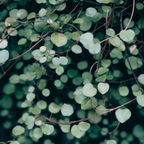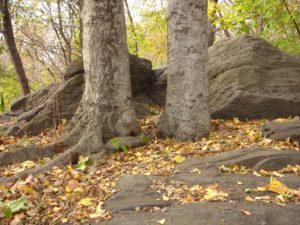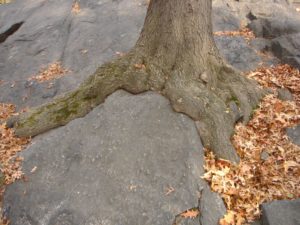
Tree care / How does a tree in public space become 80 years old?
In urban areas, the space available for trees to root through is limited, while good soil is of paramount importance for good growth.


In urban areas, the space available for trees to root through is limited, while good soil is of paramount importance for good growth. How do we prevent premature decay or, worse, premature death? A good growth location, both in terms of size and content, can ensure that a tree does reach a high age.
Trees do not suffer from physiological ageing. In other words, trees do not die of old age. They die as a result of environmental conditions. This can be windthrow due to root damage, lack of the necessary minerals and everything in between.
A direct cause of tree death is root damage caused by work. A delayed cause can be soil compaction. This leads initially to poor root growth and later to the death of roots. Soil compaction caused by traffic directly leads to serious problems with the absorption of water and minerals by the roots. Over the years, market parties have come up with various solutions for this, which can withstand traffic loads and are root-permeable at the same time.
Experiments with soil mixtures
The basis for improving the growing environment lies in the distant past. Pius Floris of Plant Health Cure (PHC) is a specialist in the field of mycorrhiza technology and soil biology and is the founder of Pius Floris Boomverzorging. Over 40 years ago, it was the Amsterdam tree manager Jan Couwenberg who started experimenting with different soil mixtures containing coarse sand and up to 5 percent organic matter,' says Floris. This practical research led to an overwhelming supply of all kinds of tree sand, tree soil and tree substrate.


Text with photos: Pius Floris (Plant Health Cure): 'In addition to air, water permeability and nutrition in the soil, there are other conditions that determine how old a tree will be: the quality of the soil life in the root zone and the quality of the sugars that the tree releases into the soil. As a result, trees can become very old in impossible places.
Good fungi and soil biology
Floris recognises the great importance of these well-developed products for supporting growing trees for a long time. As a soil biologist and mycorrhiza specialist, he adds an extra helping hand: 'Soil in which plants and trees have to grow is subject to three basic conditions: biological, chemical and physical. Not one of all types of mixed soil contains the biological component that would allow it to be called soil. Therefore, all stirred mixtures are so-called substrates. In this stirred or mixed soil, a lot of soil life may be present, but for the trees growing in these mixtures, the soil life is not important. The tree roots depend on the rhizosphere organisms, which only grow in the vicinity of the roots. It is essential to add beneficial fungi and useful root bacteria to substrates. Many suppliers of tree soil mixes have been mixing 3 kg Biovin with each cubic metre of tree substrate for years. It is important to realise that plants and trees can make soil themselves by feeding the rhizosphere organisms with exudates from the roots'.
Because in addition to air, permeability and nutrition in the soil, there are other conditions that determine how old a tree will be: the quality of the soil life in the root zone and the quality of the sugars the tree releases into the soil. As a result, trees can grow very old in impossible places, such as an old elm on a bridge abutment in Amsterdam or a random pine in the mountains on a rock.
Floris explains in a short lesson in soil biology: 'A tree produces sugars through photosynthesis. Of this total amount of sugars, an average of 30 percent is transported via the phloem, or the bark, to the outermost root tips, where it is released into the soil. In other words: 30 percent of the sugars that trees produce go straight into the soil! What is that for? Trees do this in order to feed the bacteria and numerous fungi in the rhizosphere, including the essential ectomycorrhiza fungi (the endomycorrhiza species obtain the necessary sugars directly from the fine roots). The quality of the organisms in the rhizosphere also determines the ability of the roots to grow and form the quality of the soil'.
'Mycorrhiza and rhizobacteria improve root utilisation, growing conditions, health and stress tolerance'.
In addition, the quality of the sugars that end up in the soil plays a very important role: any tree that grows poorly has limited photosynthesis and therefore cannot form high-quality sugars. As a result, the symbionts in the form of bacteria, soil fungi and mycorrhizal root fungi cannot be sufficiently nourished. In agriculture, it is known that good sugars feed soil life and bad sugars feed pathogens. This also applies to trees. So there is an interaction: a good growing place for the tree, in which it thrives and thus produces high quality sugars, ensures the maintenance of soil life in the rhizosphere. Mycorrhiza and rhizobacteria, in exchange for sugars, make minerals available for the trees to absorb. So they are very useful!
In short, the addition of mycorrhiza and rhizobacteria increases the utilisation of roots and improves growing conditions, health and stress tolerance. To promote recovery, they can be injected at the tree roots after transplanting or digging, in case of drought, heat or compaction. You can also apply them to new plantings for a good start.'
Plant Health Cure produces and supplies injectable mycorrhyza (Injectable Pt and Injectable Universal) for existing trees, and Tree Saver Transplant for new plantings. PHC Tree Saver ensures good water binding around the roots, so that the plant or tree takes root well. PHC advises never to mix mycorrhiza spores through the substrate. Floris: 'That's too expensive, and most mycorrhiza spores have already been eaten up or died off by the time roots are growing at that location. It is better to inject the edges of the root ball and its immediate surroundings with mycorrhiza mixed with water after applying the substrate. For some years now, Fulvic 25 has also been mixed into the injection fluid. This product strengthens the rhizosphere and stimulates the absorption of nutrients by the tree roots. In forests, fulvic plays an important role, but in urban areas fulvic is not produced.
PHC also has a range of rhizobacteria in its product range. The bacterial composition consists of several strains per product, which have essential functions in the root environment. They break down organic matter, release minerals and stimulate root formation. Some species stimulate the presence of local mycorrhiza species. Other species are specifically concerned with nitrogen fixation, water buffering, increasing dust content or enhancing starch and sugar production. Products such as Biopak and Compete Plus have been giving good results for over 20 years in many crops.'
- Nederlands
- English
- Deutsch
- Francais